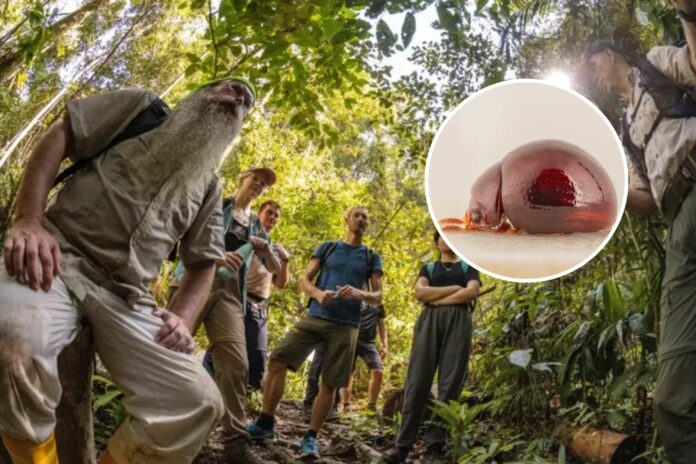A brand new species of beetle has been discovered hiding deep within the rainforest.
According to a new paper in the Biodiversity Data Journal, the new species, Clavicornaltica mataikanensis, is only around 2 mm long and lives on the forest floor of Borneo’s Ulu Temburong forest.
Clavicornaltica mataikanensis is likely one of thousands of as-yet-undiscovered species of teeny beetle lurking in the undergrowth.
“We introduce the general public to all these tiny, beautiful, and completely unknown animals, and show them that there is a whole world still to be discovered,” Iva Njunjić, an entomologist and founder of the Taxon Expeditions agency, said in a statement.
Taxon Expeditions – Sotiris Kountouras / Holm Friedrich
The new species was discovered by citizen scientists and researchers on an expedition to the forest, which was designed to uncover some of the plethora of undiscovered species filling up the rainforest.
“Since 2017, the ‘scientific travel agency’ Taxon Expeditions has been organizing annual expeditions to field centers in Borneo. During these expeditions, a team of taxonomic experts works together with international citizen scientists and local students to teach a mini-field course in tropical biodiversity and to discover, describe and publish one or more species new to science,” the authors wrote in the paper.
This “taxonomy tourism” aims to raise public awareness of the vast number of undiscovered species remaining in the world and, therefore, the importance of protecting these habitats.
Borneo, where the new species was found, is the third-largest island in the world and is shared by three countries: parts of Malaysia and Indonesia, and the entire nation of Brunei.
This new species was discovered using a technique called leaf-litter sieving. This technique involves collecting compacted leaf debris on the forest floor and feeding it into a leaf litter sieve, which filters out smaller particles, including insects.
Clavicornaltica mataikanensis was named for the stream Mata Ikan, which means “fish eye.” According to the paper, it is the second species within the Clavicornaltica genus discovered in Ulu Temburong National Park.

Taxon Expeditions – Holm Friedrich
This beetle is thought to feed on mosses and leaf litter on the forest floor. It is actually one of the largest members of its beetle family, which may explain why so few have been discovered so far.
“It is worth noting that they are very small, with most species having a body length of only around 1 mm. These two factors have contributed to the fact that the genus was only discovered in the 1970s. Even with the dozens of species described since then, many believe that this only scratches the surface of their true diversity,” the authors wrote in the paper.

Do you have a tip on a science story that Newsweek should be covering? Do you have a question about new species? Let us know via [email protected].
Uncommon Knowledge
Newsweek is committed to challenging conventional wisdom and finding connections in the search for common ground.
Newsweek is committed to challenging conventional wisdom and finding connections in the search for common ground.


